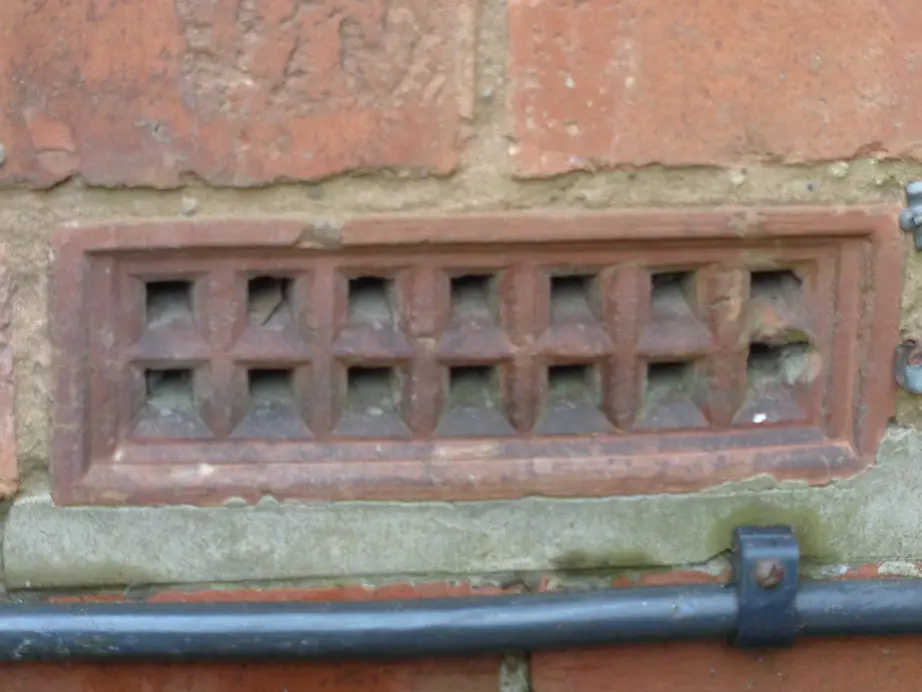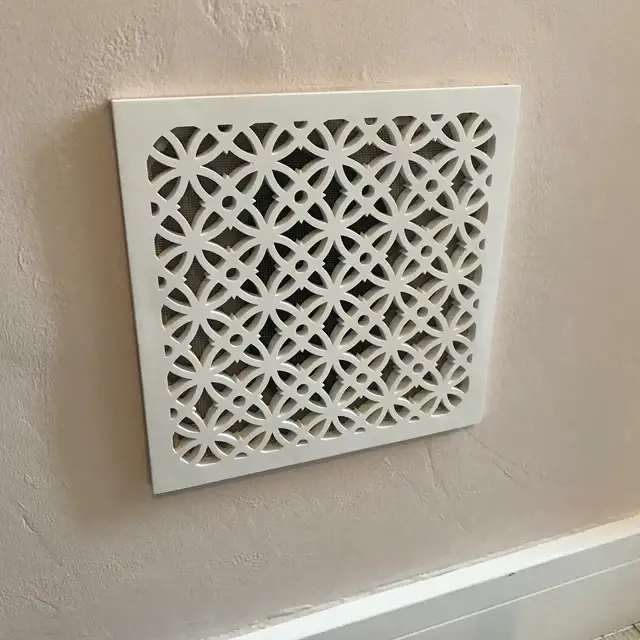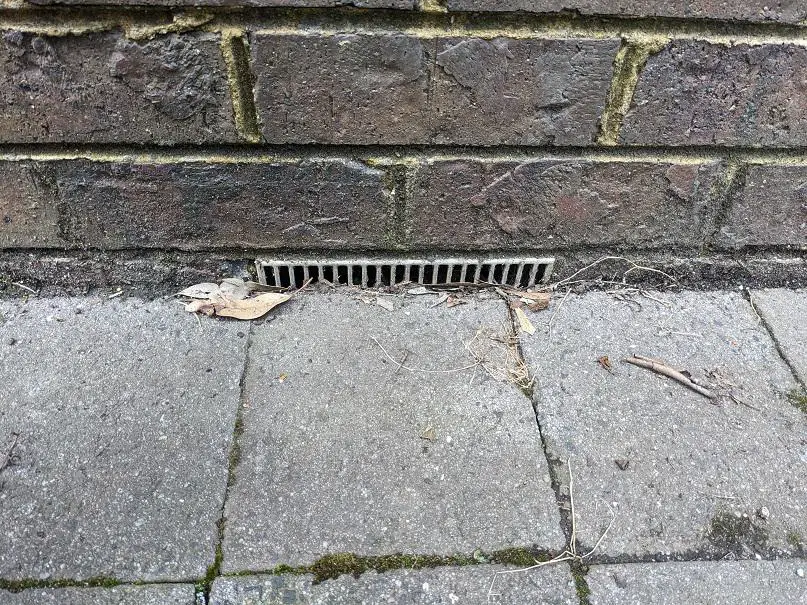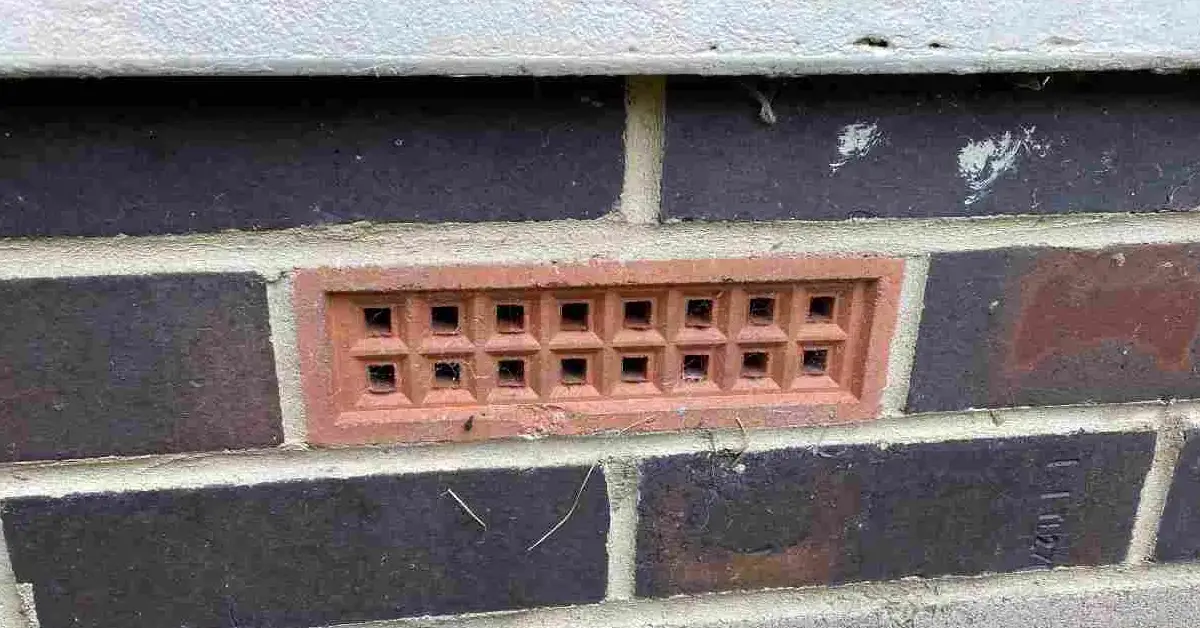Air Bricks in Old Houses: Key to keeping your home ventilated
Air bricks in old houses are a key feature that allows the house to manage humidity and moisture. Also known as ventilation bricks, they are a common feature in older houses, especially those built with single masonry walls.
These small openings, often found at the base of exterior walls, serve an important purpose in maintaining the health and longevity of a home.
What does an air brick do?
Air Bricks allow for proper ventilation and air circulation, which can prevent issues with dampness and mould.
Many homeowners don’t consider the importance of air bricks and in numerous cases, air bricks are even blocked or covered.

In this blog, we will explore the history and function of air bricks in older houses, the consequences of blocked or filled-in air bricks and the role air bricks play in preventing dampness.
We will also provide recommendations for maintaining and preserving the air bricks in your home.
Why do older houses have air bricks?
Air bricks have been used in construction for centuries, and were particularly popular in the 19th and early 20th centuries. The purpose of an air brick is to improve the ventilation and air circulation within a home.
Air bricks pre-date modern central heating and were introduced when homes were primarily heated via fireplaces. The introduction of air bricks enabled fresh air to get into the house and expel stale air out. This helped to prevent issues such as dampness, mould, and poor indoor air quality.
Air bricks in older houses allow you to maintain a healthy and comfortable indoor environment by preventing the build-up of moisture and pollutants.
As well as maintaining a healthy environment they also help to prevent dampness, which can occur when there is a lack of ventilation and air circulation. This is key when trying to tackle or keep dampness at bay. Extra ventilation enables moisture to circulate properly in the home, reducing condensation build-up.
Condensation mould can cause numerous issues, not only to your health but also to the fabric of your home.
What happens if air bricks are blocked?
In older houses, where central heating and air conditioning systems may not be present or may not be as efficient as modern systems, the importance of proper ventilation and air circulation is even greater.
If air bricks are blocked or covered, it can impede the flow of fresh air into the house and the expulsion of stale air out.
This can lead to a number of problems, including poor indoor air quality, increased humidity levels, and the build-up of pollutants.
Without proper ventilation, moisture can accumulate in the walls, floors, and ceilings of the house, which can lead to the growth of mould and mildew.
Damp can also lead to unpleasant musty odours and can make the house feel cold and uncomfortable. In older houses, where damp proofing may not be as advanced as in modern dwellings, air bricks play an even more important role in preventing dampness.
Older homes are often colder meaning condensation dampness can cause numerous issues. Thankfully we have a guide on condensation dampness, which explains exactly what it is and how to avoid it.
Air bricks in old houses – is it OK to fill in air bricks?
There are a few reasons why someone might want to fill in their air bricks. One reason is to reduce drafts and improve energy efficiency. Older houses were not built to the same energy efficiency standards as modern homes.
Filling in air bricks can help to reduce drafts, but it’s important to note that this should only be done in conjunction with other measures to improve energy efficiencies, such as adding insulation or weather-stripping.
Sometimes homeowners don’t like the aesthetic of air bricks around their homes.
This Kinda Old House Top Tip
Our top tip would be to improve the aesthetic internally is opting for a decorative air vent cover. Numerous styles can be found online made from both plaster and metal.
They are a great touch inside a period home and look so much better than a cheap plaster cover.

Although you can reduce drafts and change the aesthetic by filling in an air brick, it can also have negative consequences.
One of the most significant consequences is the impact it can have on ventilation and air circulation.
Blocking air bricks will impede the flow of fresh air into the house and the expulsion of stale air out. As mentioned above this can lead to the build-up of moisture and create a host of issues with dampness.
We would not recommend the filling of an air brick due to the amount of ventilation required to keep condensation and dampness at bay in an older home. If you do choose this path we’d recommend consulting with an expert in older homes to ensure the reduced ventilation can be offset with other measures.
If you already suffer from dampness in your older home, we have a full section of guides to help you combat this stressful problem.
Air bricks alternatives? What are my options?
Instead of filling in your air bricks, there are other measures that can be taken to improve the energy efficiency and aesthetic of the home.
To reduce drafts, homeowners can add insulation or renew sealing around the windows and doors.
By conducting a full examination of all of your windows and doors you can help keep the warm air inside the house, making it more comfortable to live in.
If air bricks on the exterior of your home are really not your thing, you could change the look by adding shutters or window boxes to keep them out of direct sight.
These can be customised to match the style and colour of the house, and they can be easily removed for cleaning and maintenance.
Another option to change the aesthetic is to install air brick covers. These can be made of wood, metal, or plastic and can be painted or stained.
A more severe option is to look at alternative ventilation systems. Installing a mechanical ventilation system will significantly improve indoor air quality and help to prevent dampness, mould and condensation.
The system works similarly to an air brick by extracting stale air from the house and bringing in fresh air from the outside, but it does so via mechanical means rather than naturally. Although these systems are highly effective they are costly.
Do air bricks stop damp?
Due to the prevalence of damp issues in older houses, people often wonder if an air brick is a solution to the problem.
Air bricks do play an important role in preventing dampness in older houses. As we have seen, they allow fresh air to circulate through the house, helping to reduce humidity levels and prevent the build-up of pollutants.
They also help to expel stale air and moisture from the house, which helps to prevent condensation and the growth of mould and mildew.
However, it’s important to note that air bricks alone are not enough to prevent damp in older houses. There are other factors that also need to be considered.
- Proper Insulation: Insulating the house’s walls, floors, and roof can help reduce heat loss and prevent condensation.
- Good drainage: Making sure that the house has good drainage can help to prevent water from seeping into the walls and causing dampness.
- Maintaining guttering and downpipes: Keeping gutters and downpipes in good repair can help to prevent water from overflowing, and can help avoid penetrating damp.
- Fixing leaks: Leaks, such as those in the roof or around windows, can cause damp, so it’s essential to fix them as soon as they are discovered.
- Proper ventilation: Having a proper ventilation system in the house will help to reduce humidity levels and prevent the growth of mould and mildew.
- Regular maintenance: ongoing maintenance around your house can help to identify and fix potential damp issues before they become a problem.
Air bricks in old houses – How to maintain?
Air bricks are an important part of the ventilation system in older houses, and it’s important to keep them in good working order.

Regular maintenance can help to ensure that they are functioning properly and can help to prevent dampness, mould, and structural damage.
Here are a few tips for maintaining air bricks:
- Keep them clean: Air bricks can become clogged with dirt and debris, restricting airflow. It’s important to keep them clean by removing any debris that may have accumulated around them.
- Blockages: Blockages can occur due to leaves, weeds, and other debris, it’s important to check for blockages and remove them if necessary.
- Check for damage: Air bricks can become damaged due to weathering, erosion, and other factors. It’s important to check them for damage and repair or replace them if necessary.
- External ground levels: If a path has been added after the house was originally built, ensuring it does not encroach on the air bricks is important for general airflow.
Regular maintenance of air bricks along with other fundamental house maintenance is the key to keeping dampness at bay in an old house.
Air bricks form a crucial part of the design of older homes and how they deal with moisture and ventilation, so they should not be forgotten.
Check out our full guide on how to treat damp in older houses for more helpful tips.


Leave a Reply